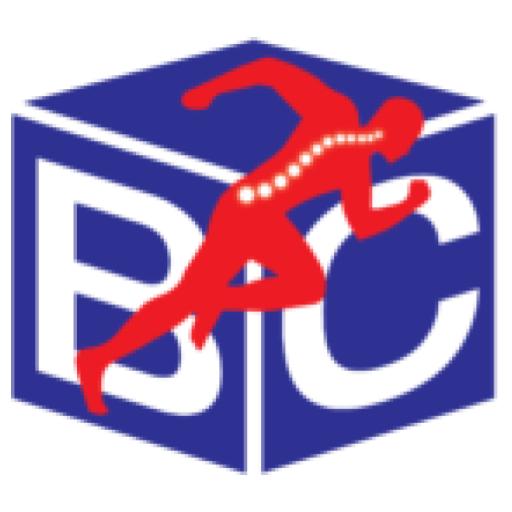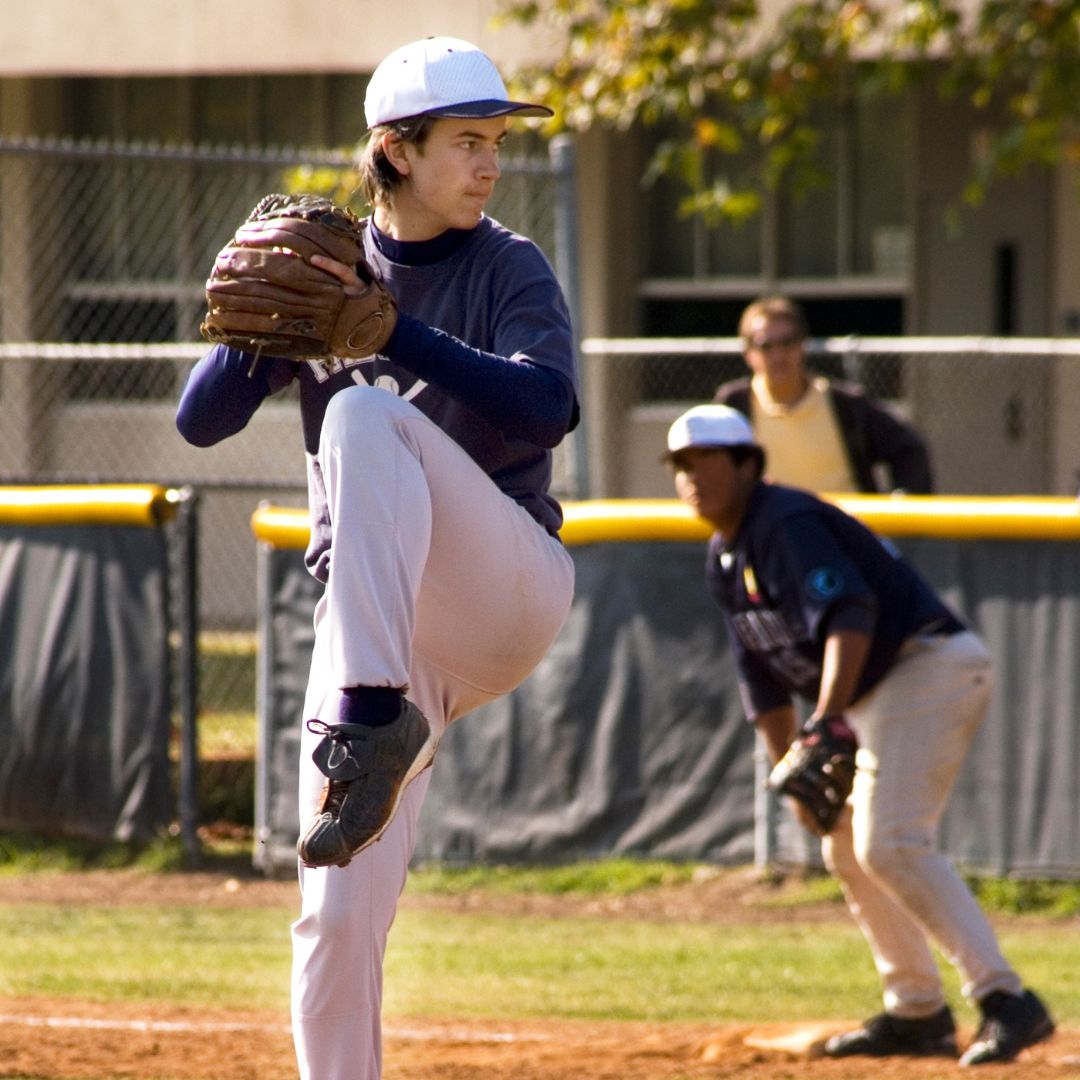Chiropractic and Physical Therapy Modalities
At Block Chiropractic and Sports Physical Therapy in Smithtown, NY and Selden, NY we use a variety of modalities to supplement our manual skills. We pride ourselves on our hand proficiencies, however, we also understand that there are several benefits of various physical agents in the healing process. In our offices, we try to only implement those modalities with high levels of support in the research. Therefore, there are other modalities that you may have heard of, however, in our professional opinion are not the most beneficial in treatment care.
Below is a list of modalities we use to supplement our chiropractic and physical therapy services in Smithtown and Selden, NY:
-
- Thermotherapy
-
- Cryotherapy
-
- Electrical Stimulation
-
- Cold Laser Therapy
- Pneumatic Therapy (Game Ready®)
We will now discuss each of these modalities in more detail. We will explain what it is, benefits, indications, contraindications, and support in the research.
Thermotherapy:
Thermotherapy is the medical term for heat. We implement heat mostly through moist heat packs. At the beginning of most chiropractic or physical therapy visits, the patient will receive 5-10 minutes of heat. Other ways physical therapy in Selden, NY can provide heat is through paraffin and ultrasound.
The theoretical benefits of heat are that it can increase blood circulation, improve tissue metabolism and improve flexibility by increasing tissue extensibility. By increasing blood circulation and metabolism to the area, protein, oxygen and other nutrients are brought to the site of injury to improve pain modulation and accelerate the healing process. This, in turn, can help decrease pain and speed up recovery. Additionally, improving tissue extensibility before exercise and soft tissue massage has been suggested to increase their benefits. It is important to note that because this increase in circulation, heat is often avoided with an acute injury. Heat can increase swelling and pain in the injured area acutely.
Moist heat is highly supported in the research. It transfers heat to the skin via conduction and with proper layers between skin and heat source, has minimal risk to the patient. Heat packs are large in surface area and come in cervical and lumbar sizes. Therefore, they are most useful with neck, back, and extremity injuries because they can cover a larger area. With physical therapy in Smithtown, NY, we use a hydrocollator to heat up the heat pack and cover the pack with a thick towel that equals approximately 3 towel layers. It is important to provide at least 6-8 “towel layers” between the skin and the hot pack.

Paraffin is also a low risk but is most beneficial only with hands and body parts with small surfaces (i.e. between fingers and thumb). Paraffin is melted wax and wax has a melting temperature that is less than the temperature required to burn skin. Therefore, the wax if used correctly, will not burn the patient’s skin. The benefit to the wax over a heat pack is that it will mold to the patient’s hand and get in between fingers making it very useful for hand arthritis, carpal tunnel and/or wrist/carpal fractures. If you have questions about how wax is administered, contact Block Chiropractic and ask about physical therapy in Selden, NY.
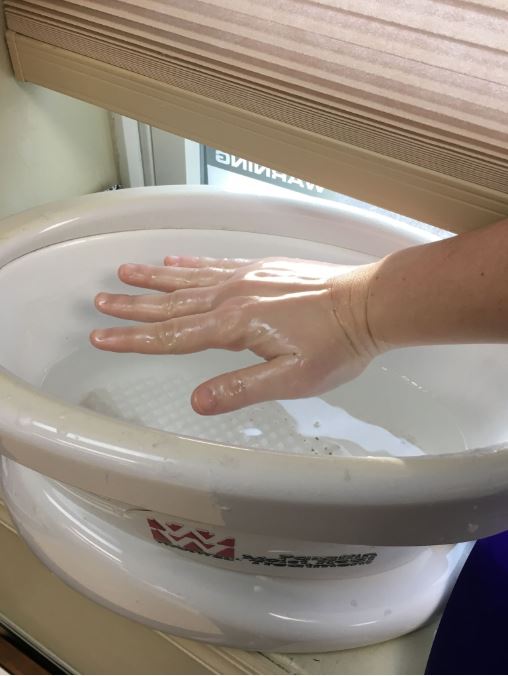
Ultrasound is controversially supported in the research. There are some articles that support its use and several others that do not. Therefore, it is not often used in our clinic. Ultrasound uses sound waves that travel through an applied gel to the affected area. It can be used to address superficial, smaller tissues such as wrist flexors and extensors, or deeper, larger tissues such as quadriceps and hamstrings. We are trained in its use and can be found using at times for carpal tunnel, lateral or medial epicondylitis (tennis or golfer’s elbow, respectively), various tendonitis’, etc. However, like previously stated, we do not often use it due to its lack of consistent support in the research. If you’re curious about ultrasound, contact Block Chiropractic for physical therapy in Smithtown, NY.

Below is a chart that outlines indications (common uses) and contraindications (reasons why NOT to use) of thermotherapy:
| Indications | Contraindications |
| Muscle pain
Subacute, chronic pain Decreased flexibility/joint stiffness |
Acute injury
Blood clots Decreased sensation (Diabetes, Spinal cord injury) Open Wounds Infection, or tuberculosis Malignancy CAREFUL with – pregnancy, eyes/sinuses, cardiac issues, growth plates, over hardware (US) |
As you can see, heat can be beneficial in treating various chiropractic and physical therapy diagnosis, especially in the outpatient, orthopedic setting. It has been supported in the treatment of whiplash, cervical stiffness/muscle spasms, subacute/chronic tendonitis, chronic low back pain, fibromyalgia and joint replacements (further along in treatment).
Cryotherapy:
Cryotherapy is the medical term for cold, or ice. Cryotherapy is essentially the complete opposite of thermotherapy. The cold has constricting properties, meaning that it will decrease circulation to the area and decrease cell metabolism. Also, it can shut off cells known as nociceptors (pain receptors) to help decrease pain and provide analgesic effects. You can receive cryotherapy through the use of physical therapy in Selden, NY. There is some controversy on the benefits of ice, especially after acute injuries. This will be explained at the end of this section. In our clinic, we use ice through conduction via cold packs, ice massage and Game Ready ® (explained in pneumatic compression section).
Ice causes the skin to go through a series of four stages: 1) intense cold, 2) stinging/burning, 3) ache and 4) numbness. These stages can be uncomfortable to go through, however, are completely normal in process. Ice is beneficial for 5-20 minutes, however, should be used in excess to prevent frostbite or burning.
Cold Packs are similar to hot packs in that they are larger in surface area and can be used for larger body parts for a generalized cooling effect. They are often used for 10-20 minutes at the end of treatment to decreased post-treatment pain or swelling but are also used at the beginning of sessions with immediate post-operative patients or acute muscle/tendon/ligament injuries. Cold packs can be administered through the use of physical therapy in Smithtown, NY.
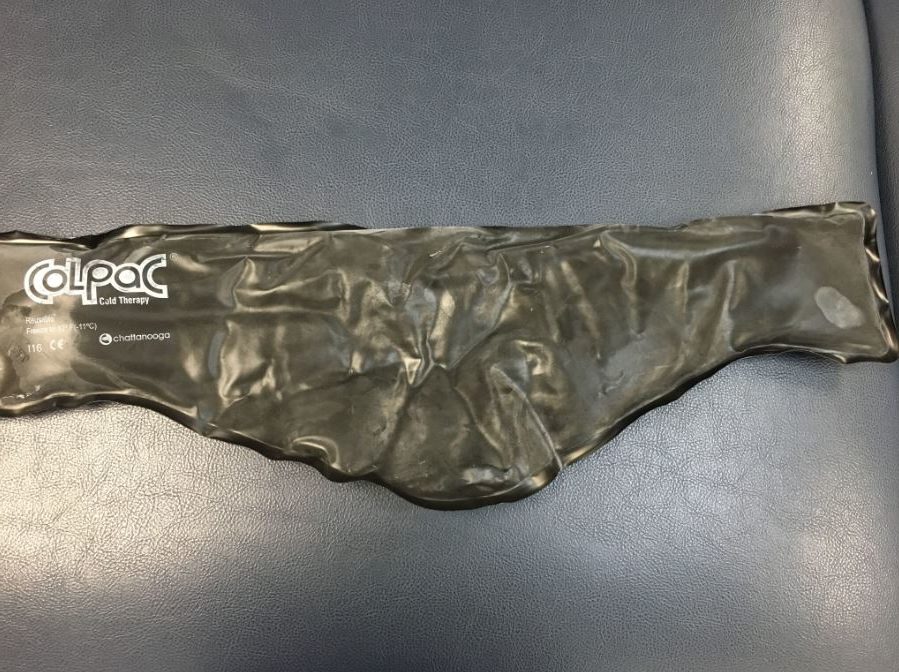
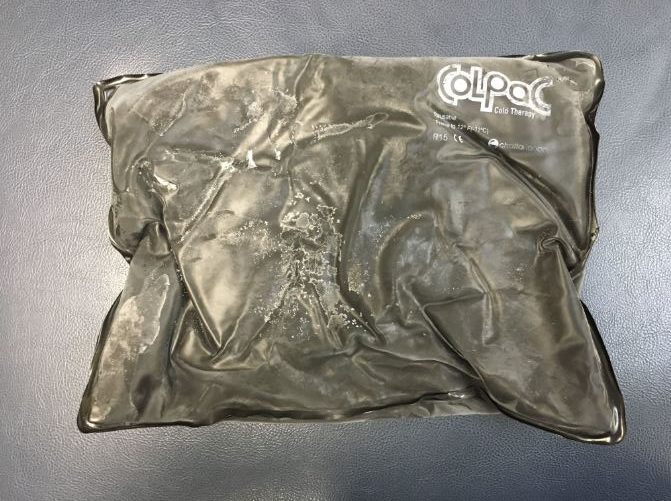
Ice massage is the direct application of an ice cube, or block of ice, to the skin. The time of ice massage is less than that of a cold pack because of the direct contact with the skin. It is typically implemented for only 5-10 minutes. We often implement ice massage to injuries such as biceps tendonitis, lateral and medial epicondylitis, Achilles tendonitis, carpal tunnel or any other injury we want to give a more direct treatment to.

Below is a chart that outlines indications (common uses) and contraindications (reasons why NOT to use) of cryotherapy:
| Indications | Contraindications |
| Acute pain or sprain/strain
Chronic pain Inflammation |
Blood clots
Decreased sensation (Diabetes, Spinal cord injury) Open Wounds Cold sensitivity Decreased blood circulation CAREFUL with – over eyes/sinuses, over superficial nerves, cardiac issues, growth plates, infection, over hardware (US) |
Again, cryotherapy is highly supported in the treatment of various chiropractic and physical therapy in Selden, NY pathologies. It is more useful in acute injuries to help decrease swelling and relieve pain. As stated earlier, there is some controversy over the use of ice for various reasons. Firstly, recent evidence has come to the surface stating the benefits of acute swelling in the healing process. Therefore, by icing this area, you may be repelling helpful cells and decrease the normal inflammatory response required for healing. Secondly, another theory states that ice only has anti-inflammatory properties only during the acute stages (up to one week). This means that it is possible that ice is pointless in decreasing swelling after the first week of injury. With this being said, it is up to the provider to decide if they feel the ice is appropriate or beneficial in inflammation or pain.
It is also important to note that the re-warming period after ice should be at least two times the application time. For example, if you ice for 20 minutes, you should then let the skin settle for 40 minutes before reapplying.
Electric Stimulation:
Electrical stimulation, or E-stim, is the use of electrical currents to change the flow of electrons. It is often used in our chiropractic and physical therapy in Smithtown, NY clinic for pain modulation (transcutaneous electrical nerve stimulation (TENS) or interferential current (IFC)), and muscle innervation/reeducation (Russian).
The theory behind TENS/IFC is that the high-frequency electrical impulse activates larger fibers to inhibit pain communication to the brain. The difference between TENS and IFC is simply the direction of the current that is altered by different placements of electrodes. The patient will feel strong, but a comfortable tingling sensation that is safe to the patient and area affected.
Russian stimulation is completely different that TENS/IFC, in that it is often more uncomfortable. It is still safe and painless to the patient, however, it provides a stronger sensation to the treatment area. This form of stimulation is often used in physical therapy treatment for post-operative patients, for example, ACL surgery and total joint replacements. Often times after surgery, muscles will shut down and become weak and inhibited. By applying the Russian to the area, it uses medium frequency currents to create a muscle contraction and reinnervate/education the muscle atrophied. This can improve strength quicker and improve return to activity.

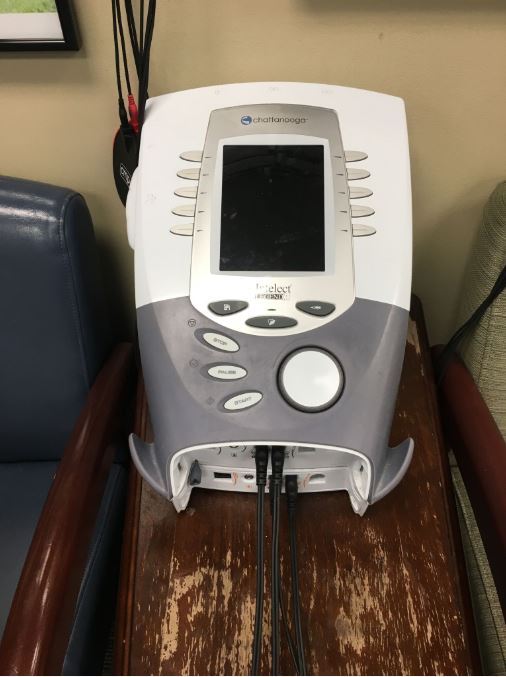
| Indications | Contraindications | |
| TENS/IFC | Chronic pain
Whiplash Muscle spasms Arthritis pain |
PACEMAKER
Over uterus Over carotid sinus Malignancy Infection Open wound Blood clots Growth plates |
| Russian | Muscle atrophy and weakness |
There are several other uses for electrical stimulation in various settings, however, these are the most used in our Smithtown and Selden clinics. They are highly supported in the research for chiropractic and physical therapy services for chronic neck and back pain (TENS/IFC), muscle spasms (TENS/IFC) and muscle atrophy (Russian).
Cold Laser Therapy:
Cold laser is a type of light therapy in that it uses photochemical properties to change circulation processes. The light sent into the affected area increases circulation and cell metabolism, similar to heat. According to a study by Cotler et al. (2015), “Light with a wavelength in the red to near-infrared region of the spectrum (660nm–905nm), is generally employed because these wavelengths have the ability to penetrate skin, and soft/hard tissues and are proven in clinical trials to have a good effect on pain, inflammation and tissue repair.” For those you who remember the “powerhouse of the cell” in your high school biology classes, the laser helps recruit the mitochondria to the painful site to improve healing process by enhancing cells such as fibroblasts and lymphocytes – both useful in the inflammatory process.
The treatment time of laser is often as little as 30-60 seconds, sometimes up to 2-3 minutes. It can be beneficial in as low as one treatment session, but more often than not takes a week or two to show great effect. During the treatment, it is important for the provider and patient to avoid looking directly into the light. Otherwise, this modality is very safe for all patients. When visiting us for physical therapy in Selden, NY, ask our physicians about this modality.
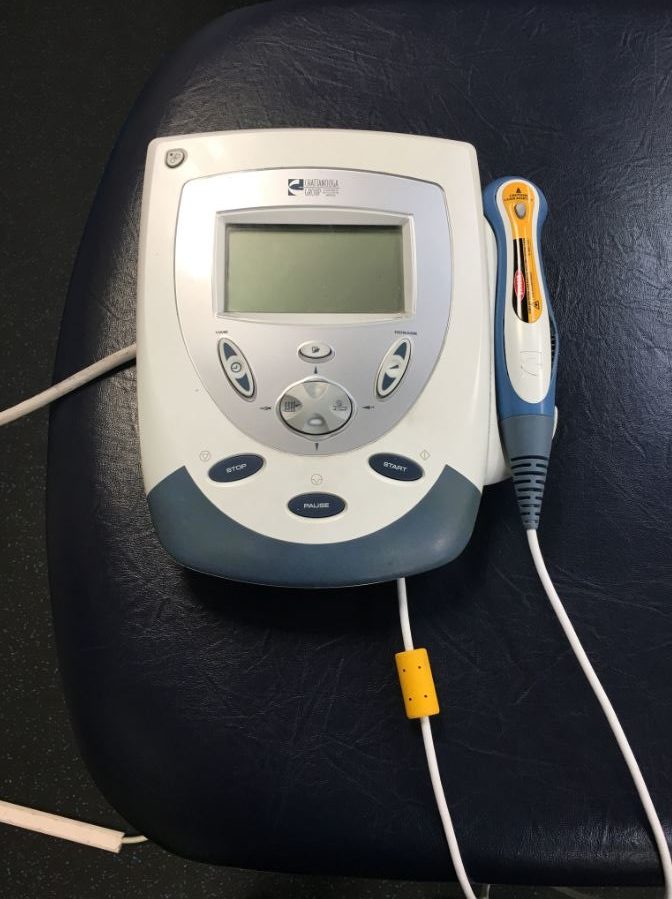
| Indications | Contraindications |
| Acute, Subacute, Chronic pain
Ligament Sprains Muscle strains Inflammation Tendonitis Bone healing Trigger points |
Over eyes
Malignancy Pregnancy (over fetus) Epileptics |
Cold Laser is one of our favorite modalities utilized by both our chiropractors and physical therapists as it has great benefits with minimal risk. It is highly supported in the research for various orthopedic conditions such as tendonitis, whiplash, tendonitis, fibromyalgia, bursitis and chronic pain.
Pneumatic Compression:
Pneumatic compression uses an air pump to improve circulation. We utilize the Game Ready® machine in both our Smithtown, NY and Selden, NY clinics for chiropractic and physical therapy use. In our office, we use it in the combination of cryotherapy. For example, our Game Ready® sleeves are inflated with nearly freezing cold water to encompass the knee, shoulder, low back, hip, elbow and ankle with cold water. This provides both cold and circulatory benefits to the area. It combines the benefits of cryotherapy mentioned above with compression benefits (decrease inflammation, promoted a lymphatic return to heart).
We use the Game Ready® machines mostly on post-operative patients, sports injuries and chronic low back patients. It is highly popular and well liked in our clinic for patients of all ages and conditions.

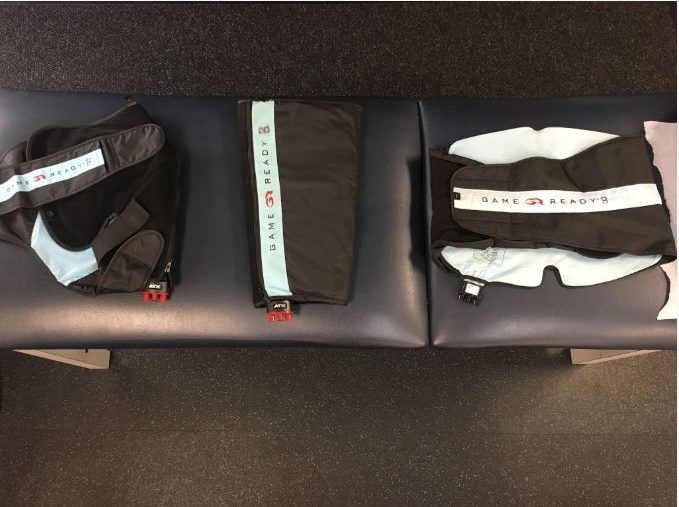
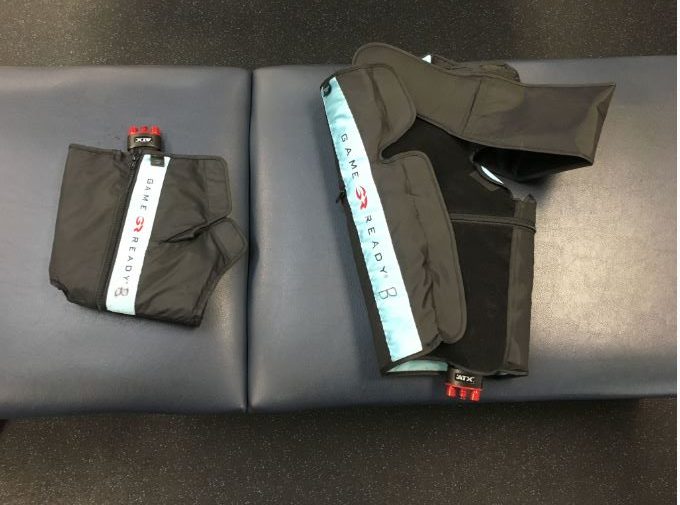
| Indications | Contraindications |
| Acute, Subacute, Chronic pain
Ligament Sprains Muscle strains Inflammation Post-operative swelling Edema Tendonitis |
Blood Clots
Malignancy Pregnancy (over fetus) Serious circulation and cardiac disease Open wounds (unless covered) Decreased sensation Dermatitis and similar skin diseases |
In conclusion, there are several modalities that can be used in chiropractic and physical therapy treatment. In our Smithtown, NY, and Selden, NY clinics, we utilize these five modalities when appropriate. We use our clinical reasoning skills to decide which patients would benefit from any of these modalities. Please contact the office to see how the implementation of these modalities can help you, remember to ask us about physical therapy in Smithtown, NY.
It is important to note that at Block Chiropractic and Sports Physical Therapy in Selden, NY, we do not rely solely on modalities in our treatment sessions. We believe that the combination of modalities, manual therapy, and corrective exercises create the best outcomes to heal and prevent recurrence of the injury. We hope this blog post increases your education of the techniques you see in our clinics.

